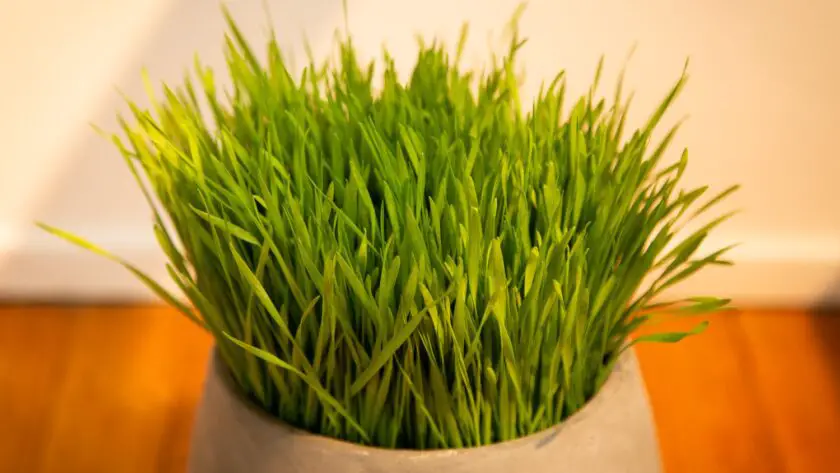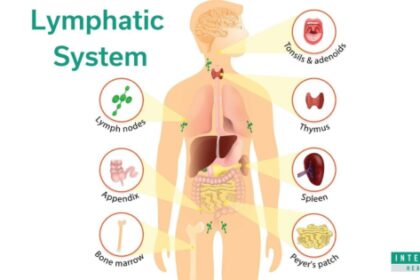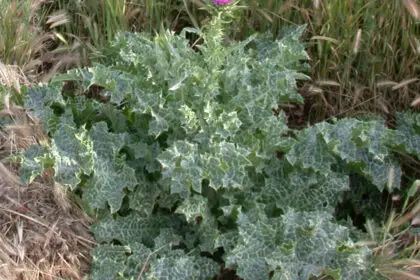We are constantly on the lookout for ways to improve our health and well-being, seeking out natural remedies that can address common issues. The term Superfood is starting to catchin on, and I believe they are some the most healing things for our body, with less side effects than anything made in a factory.
This specific plant, you probably see on sale at your local grocery store. Many people are under the assumption that you HAVE to juice this amazing plant to receive all the benefits, but thankfully, that is completely false!
Let’s take a closer look at this wonderful superfood: Enter the world of Wheat Grass! A nutritious plant that can be effortlessly raised indoors and used as a garnish to elevate any meal, savory or sweet!
Not only does it add a burst of color and flavor to your dishes, but this superfood also holds a ton of key nutrients, anti-inflammatory properties, digestive aids, and so much more! So, let’s uncover the secrets of this remarkable superfood and discover how it can transform your culinary experience while promoting digestive wellness.
Benefits Of Wheatgrass

Wheatgrass, the young grass of the wheat plant (Triticum aestivum), has gained popularity as a health food due to its numerous potential health benefits. It is often consumed as a juice, added to smoothies, as a garnish on top of food, and can also be found in supplement form.
- Nutrient-rich: Wheatgrass is packed with essential vitamins, minerals, and phytonutrients. It is an excellent source of vitamins A, C, and E, as well as minerals like iron, calcium, magnesium, and potassium. It also contains amino acids, chlorophyll, antioxidants, and enzymes, making it a highly nutritious addition to your diet.
- Digestive health: Wheatgrass contains dietary fiber, which is important for maintaining a healthy digestive system. Fiber can promote regular bowel movements, prevent constipation, and support a healthy gut microbiome. It also reduces gas, bloating and upset stomach.
- Antioxidant properties: Wheatgrass is rich in antioxidants, which help protect the body against oxidative stress caused by harmful free radicals. Antioxidants can help prevent cellular damage, reduce inflammation, and support overall health.
- Detoxification support: Wheatgrass is often associated with detoxification due to its high chlorophyll content. Chlorophyll is a natural detoxifier that helps eliminate toxins, heavy metals, and pollutants from the body. It may also support liver function and aid in the body’s natural detoxification processes.
- Immune system support: The nutrients in wheatgrass, including vitamins, minerals, and antioxidants, can help support a healthy immune system. They may enhance the body’s ability to fight off infections and reduce the risk of certain diseases.
- Potential anti-cancer properties: Some studies suggest that wheatgrass may have anti-cancer properties. It contains certain compounds like chlorophyll, flavonoids, and antioxidants that may help protect against certain types of cancer.
- Blood health: Wheatgrass is believed to have properties that can support blood health. It may help increase red blood cell count, improve blood circulation, and potentially reduce the risk of certain blood disorders.
- Energy and vitality: Wheatgrass is often associated with increased energy levels and overall vitality. The combination of nutrients, antioxidants, and chlorophyll in wheatgrass can help boost energy, combat fatigue, and improve overall well-being.
The Culinary Versatility of this Superfood

Beyond its digestive benefits, wheatgrass offers a delightful culinary experience. As a versatile garnish, it can enhance the taste and visual appeal of any dish. From sprinkling it on salads and soups to using it as a topping for various culinary creations(similar to chives or parsley).
Even preparing the wheatgrass as a pesto is delicious, combining garlic, oil, and other herbs. Just be sure not to expose the wheatgrass to heat as it will kill off most of the nutrient profile.
Here is one of my favorite recipes that is super versatile, just use in place of any call for pesto! Prepare to elevate your dishes to a whole new level, both in terms of flavor and nutritional value.

Ingredients
3 cups fresh basil
4 cloves garlic
⅓ cup Micro Ingredients nutritional yeast
1 tsp. Micro Ingredients Wheatgrass Powder
¾ cup Hemp Seeds
2 Tbsp. lemon juice
¼ cup olive oil
Sea salt and black pepper, to taste
Directions
Combine all ingredients together in a high-speed blender or food processor. Blend until smooth.
Store in a sealed jar in the refrigerator for up to one week.
Servings: 1 cup
Growing Wheatgrass
Thankfully, most grocery stores now carry small plats of wheatgrass for sale, that are the perfect size if you plan to add this delicious and nutritious delicacy to your diet a few times a week. If you can’t find it at the grocery store, your local farmers market, or even facebook marketplace is sure to have some local growers.
It’s really easy to maintain, and grows quickly! Just make sure it gets plenty of sunlight and water. If you have the time and resources, I would highly recommend trying to grow it yourself from seed!
The Interesting History Of Superfood Wheatgrass
Wheatgrass has a long history of incredibly safe, and incredibly effective use. Over time, the benefits of this miracle grass have long been forgotten, however.
The first use of wheatgrass can be traced back to about 5,000 years ago when the ancient Egyptians used young grass for health and vitality. In modern times, wheatgrass consumption was introduced to the Western world by a Food Chemist from Kansas City, Missouri Charles Franklin Schnabel and later it became popular because of Dr. Ann Wigmore, who Founded the Hippocrates Health Institute.
In 1928, when the idea of vitamins in nutrition was only starting to achieve recognition among health scientists, Schnabel was searching for a “blood-building material” to help heal chickens – to decrease their mortality while increasing their egg production.
He experimented with different vegetables and greens but nothing produced the effect he was looking for until he came across “immature wheat.” Substituting just 10% of chickens’ diet with it increased egg production in winter from 38% to 94%. The eggs also had stronger shells.
He could not yet explain scientifically why it happened, but stated that the results were so easily observed that “even a child can see the bloom of health in the grass-fed hens.”
Schnabel started making powdered dry grass and giving it to his family as a dietary supplement. In 1942 it was reported that Schnabel fed his family wheatgrass for 11 years and none of his children were reported to have ever had any health problems or even a tooth cavity.
Schnabel spread the word of his findings of wheatgrass health benefits to feed mills and the food industry. Quaker Oats invested millions of dollars into further research, according to Illinois State University.

Unfortunately by the end of World War II, people became more interested in materialistic products and less in personal nutrition, so Schnabel’s success was very short-lived.
People became more and more disinterested in food-based supplement, and the research on wheatgrass was quickly forgotten.
In Conclusion
Wheatgrass offers a myriad of health benefits and holds great culinary potential. Its nutrient-dense composition, antioxidant properties, and potential detoxification support make it a valuable addition to a healthy diet.
Packed with essential vitamins, minerals, and phytonutrients, wheatgrass provides a natural boost to the immune system, promotes digestive health, and may even have anti-cancer properties.
While the taste of wheatgrass alone may not be for everyone, its versatility in culinary applications allows for creative and delicious combinations. It is definitely worth experimenting!
Whether consumed as fresh tray-grown wheatgrass or in the form of convenient wheatgrass powder, this vibrant green superfood can be incorporated into smoothies, juices, salads, and on top of meals as a garnish.
Looking For A High-Quality Wheatgrass Powder?
Check Out Micro Ingredients Wheatgrass Powder Here
By experimenting with different flavor pairings and recipes, you can unlock the culinary potential of wheatgrass and enjoy its health benefits in a variety of delicious ways.
As with any dietary change or new ingredient, it’s important to listen to your body, and start slowly ingesting then add more over time. With its remarkable nutritional profile and potential health benefits, wheatgrass stands as a promising addition to a well-rounded and wholesome lifestyle.





